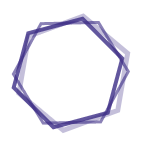Indocyanine green fluorescence navigation in laparoscopic hepatectomy: a retrospective single-center study of 120 cases.
Surg Today
; 51(5): 695-702, 2021 May.
Article
em En
| MEDLINE
| ID: mdl-33128594
Texto completo:
1
Coleções:
01-internacional
Base de dados:
MEDLINE
Assunto principal:
Laparoscopia
/
Cirurgia Assistida por Computador
/
Imagem Óptica
/
Hepatectomia
/
Verde de Indocianina
/
Fígado
/
Hepatopatias
Tipo de estudo:
Observational_studies
/
Prognostic_studies
Limite:
Adult
/
Aged
/
Female
/
Humans
/
Male
/
Middle aged
Idioma:
En
Revista:
Surg Today
Ano de publicação:
2021
Tipo de documento:
Article
País de afiliação:
China
País de publicação:
Japão

